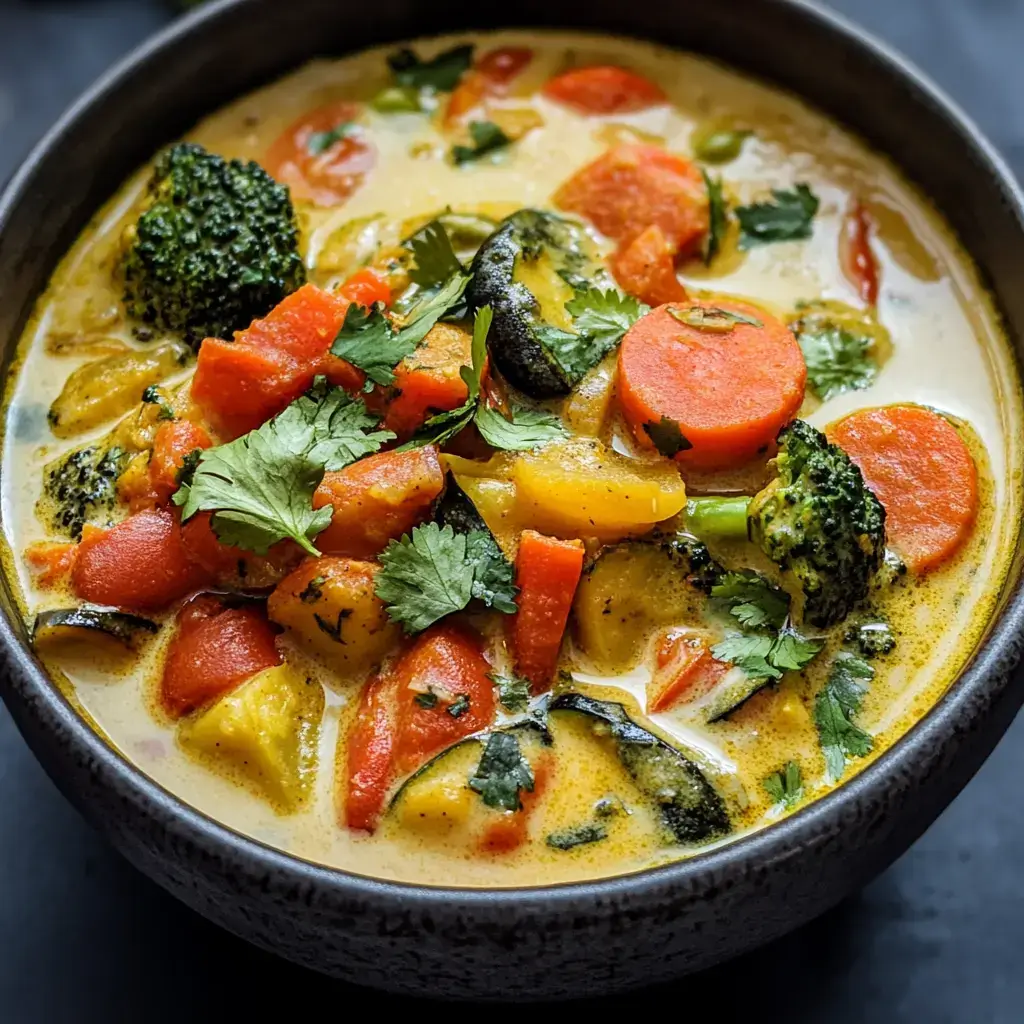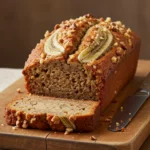Vegetable curry with coconut milk is a delightful dish that not only tantalizes the taste buds but also offers a nutritious meal for those seeking a healthy lifestyle. This rich and creamy curry, infused with aromatic spices, is a perfect blend of taste and health, making it a favorite among vegetarians and non-vegetarians alike. In this comprehensive guide, we’ll take you through the ingredients, preparation, and ways to enjoy this delicious dish.
Ingredients
To create this mouth-watering vegetable curry with coconut milk, you’ll need the following ingredients:
- 1 can coconut milk
- 2 cups mixed vegetables (carrots, bell peppers, peas)
- 1 onion, chopped
- 2 garlic cloves, minced
- 1 tbsp ginger, grated
- 2 tbsp curry powder
- 1 tbsp olive oil
- Salt and pepper to taste
- Fresh cilantro for garnish
These ingredients are not only easy to find but also packed with nutrients that contribute to a balanced diet.
Instructions
Preparing this vegetable curry is straightforward and takes less than half an hour. Follow these simple steps to make a delicious curry:
- Heat olive oil in a large pan over medium heat.
- Add onion, garlic, and ginger; sauté until soft. This should take about 3-4 minutes.
- Stir in curry powder and cook for 1 minute. This will release the spices’ aroma, enhancing the flavor of your curry.
- Add mixed vegetables and coconut milk; bring to a simmer. Ensure the vegetables are well-coated with the coconut milk and curry mixture.
- Cook for 15-20 minutes until the veggies are tender. Stir occasionally to prevent sticking.
- Season with salt and pepper according to your taste preferences.
- Garnish with cilantro and serve hot. The cilantro adds a fresh and vibrant touch to the dish.
Nutrition Facts
This vegetable curry is not only delicious but also nutritious. Here are the approximate nutrition facts per serving:
- Calories: 180
- Protein: 3g
- Fat: 15g
- Carbohydrates: 12g
- Fiber: 4g
- Sugar: 2g
These nutrition facts make it clear that this curry is a great option for those who are looking to enjoy a healthy meal without sacrificing flavor.
How to Serve
Vegetable curry with coconut milk is not only a delightful dish but also remarkably versatile, lending itself to a variety of serving options that can enhance your dining experience. Here are some comprehensive ways to serve this aromatic curry that will elevate its flavors and textures.
1. With Rice
One of the most classic and satisfying ways to serve vegetable curry is over a bed of rice. The fluffy grains absorb the rich, creamy sauce, creating a harmonious balance of flavors.
- Types of Rice:
- Jasmine Rice: Known for its floral aroma and slightly sticky texture, jasmine rice is an excellent choice that complements the curry’s richness.
- Basmati Rice: This long-grain rice has a nutty flavor and fluffy texture, making it a popular option in Indian cuisine. It pairs beautifully with the spices in the curry.
- Brown Rice: For a healthier alternative, brown rice adds a nutty flavor and chewy texture, along with additional fiber and nutrients.
- Preparation Tips: Cook the rice according to package instructions, ensuring it’s fluffy and not overly sticky. You can also add a pinch of salt or a few drops of coconut milk during cooking for added flavor.
2. With Bread
Serving vegetable curry with bread offers a delightful textural contrast and is perfect for soaking up the flavorful sauce.
- Types of Bread:
- Naan: This soft and pillowy Indian bread is perfect for scooping up curry. You can opt for plain naan or flavored varieties like garlic naan or cheese naan.
- Roti: A whole wheat flatbread, roti is lighter and slightly chewy, providing a wholesome accompaniment to the rich curry.
- Pita Bread: Soft and versatile, pita can be used to scoop the curry or even cut into triangles for dipping.
- Serving Suggestions: Warm the bread before serving to enhance its flavor and texture. You can also brush it with a little melted butter or ghee for an added richness.
3. As a Side Dish
Vegetable curry can also shine as a flavorful side dish, complementing a variety of main courses.
- Accompanying Proteins: Consider serving it alongside grilled meats such as chicken, lamb, or fish for a balanced meal. If you prefer a vegetarian option, grilled tofu or tempeh are excellent choices that absorb the curry’s spices well.
- Serving Style: Present the curry in a smaller bowl alongside the main dish, allowing diners to add as much or as little as they like to their plates. This method not only enhances the meal but also adds a vibrant splash of color to the dining table.
4. In a Bowl
For a cozy and comforting meal, serve the vegetable curry in a bowl, perfect for those chilly evenings or when you’re in need of a warm hug in a dish.
- Garnishing: Top the curry with fresh cilantro for a burst of color and flavor. You can also add a squeeze of lime or lemon juice to brighten the dish.
- Serving Suggestions: Include a side of crispy papadums or a small salad for added crunch and freshness. Additionally, a dollop of yogurt or a sprinkle of diced avocado can provide a creamy contrast to the spices.
5. With Additional Accompaniments
Enhance your serving experience by offering a selection of accompaniments that complement the curry.
- Pickles and Chutneys: Indian pickles (achar) and chutneys (like mango or mint) can add a zesty kick that balances the richness of the coconut milk.
- Salads: A simple cucumber and tomato salad with a splash of lemon juice can provide a refreshing counterpoint to the spicy curry.
- Beverages: Consider pairing the meal with a cooling drink, such as a mango lassi or a refreshing mint lemonade, to balance the spices in the curry.
By exploring these various serving options, you can create an enjoyable and satisfying dining experience that highlights the deliciousness of vegetable curry with coconut milk. Whether served over rice, alongside bread, or as a side, this dish can be adapted to suit any occasion, making it a staple in your culinary repertoire.
Additional Tips
To elevate your cooking experience and bring out the rich flavors of your vegetable curry, consider the following comprehensive tips that will not only improve the taste but also allow you to customize the dish to your liking.
Vegetable Variations
The beauty of vegetable curry lies in its versatility. You can utilize virtually any vegetable you have on hand, which not only maximizes freshness but also reduces food waste. Here are some popular options:
- Zucchini: This mild vegetable absorbs flavors well and adds a nice texture. Slice it into half-moons or cubes, and add it midway through cooking to prevent it from becoming too mushy.
- Potatoes: A great choice for adding heartiness to your curry. Dice them into uniform pieces for even cooking, and consider using waxy potatoes like Yukon Gold for a creamier texture.
- Cauliflower: Its florets not only soak up spices beautifully but also provide a satisfying crunch. Cut the cauliflower into smaller pieces to ensure they cook thoroughly and evenly.
- Green Beans: These add a lovely snap to your dish. Trim the ends and cut them into bite-sized pieces, adding them during the last 10 minutes of cooking to retain their vibrant color and crispness.
- Bell Peppers: Available in various colors, they bring sweetness and color to your curry. Cut them into strips or chunks and add them towards the end of the cooking process for a bit of crunch.
Feel free to mix and match based on seasonal availability and personal preferences. The key is to aim for a balance of flavors and textures.
Spice Level
The spice level of your curry can significantly influence its appeal. Here’s how to tailor it to your taste:
- Curry Powder: Start with a base amount of curry powder, but be open to adjusting it. If you’re unsure, add a little at a time and taste as you go. Different brands can vary in intensity, so finding the right balance for your palate is crucial.
- Chili Powder: If you like it spicy, consider incorporating a pinch of chili powder or cayenne pepper. For a fresh kick, finely chop fresh chili peppers—like jalapeños or serranos—based on your heat preference. Remember to taste as you add, as it’s easier to increase the heat than to tone it down.
- Ginger and Garlic: Freshly grated ginger and minced garlic not only add flavor but also a warming spice that can enhance your curry’s overall profile. Sauté them in oil at the beginning for a fragrant base.
Creaminess
A creamy texture can transform your vegetable curry into a luxurious dish. Here are some ways to achieve that:
- Coconut Cream: Adding a splash of coconut cream towards the end of cooking can enhance the curry’s richness. It pairs beautifully with the spices and balances out any heat. For an even creamier consistency, you can blend some of the cooked vegetables with coconut cream before mixing them back into the curry.
- Nut Butters: Consider stirring in a tablespoon of almond or cashew butter for an alternative creamy element. This adds both flavor and healthy fats, enriching the overall dish.
- Dairy Options: If you’re not dairy-free, a dollop of yogurt or a splash of heavy cream can also add creaminess and a tangy flavor that complements the spices.
Protein Additions
Making your vegetable curry more filling can be easily achieved by incorporating protein:
- Tofu: Firm or extra-firm tofu is an excellent option. Cut it into cubes and sauté it until golden brown before adding it to the curry. This not only adds protein but also a delightful texture. For extra flavor, marinate the tofu in soy sauce or curry spices before cooking.
- Chickpeas: Canned or cooked chickpeas are a fantastic way to enhance the protein content of your curry. They add bulk and a creamy texture. Simply add them during the last 15 minutes of cooking to allow them to absorb the spices.
- Lentils: Red lentils are particularly great as they cook quickly and break down to add a thick, hearty consistency to your curry. Add them at the beginning of cooking with enough liquid to ensure they cook properly.
Leftovers
One of the joys of a vegetable curry is that it often tastes even better the next day. As the flavors meld together, the dish develops a depth that might not be present immediately after cooking. Here’s how to handle leftovers:
- Storage: Allow your curry to cool completely before transferring it to an airtight container. This prevents condensation and keeps your dish fresher. Store it in the refrigerator for up to three days.
- Reheating: When reheating, add a splash of water or vegetable broth to loosen the curry, as it may thicken in the fridge. Heat it gently on the stove or in the microwave, stirring occasionally to ensure even warming.
- Freezing: If you have a larger batch, consider freezing portions for future meals. Use freezer-safe containers, and make sure to label them with the date. Most curries can be stored in the freezer for up to three months.
By incorporating these tips into your cooking process, you can not only enhance the flavor and texture of your vegetable curry but also tailor it to suit your personal preferences, ensuring a delightful culinary experience every time.
FAQs
1. Can I use light coconut milk instead of regular coconut milk?
Yes, you can use light coconut milk if you prefer a lighter version of the curry. However, the regular coconut milk gives a richer and creamier texture.
2. Is this dish suitable for vegans?
Absolutely, this vegetable curry is vegan-friendly as it contains no animal products.
3. Can I freeze the vegetable curry?
Yes, you can freeze the curry in an airtight container for up to two months. Thaw it overnight in the refrigerator and reheat it on the stove before serving.
4. What can I use instead of cilantro for garnish?
If you’re not a fan of cilantro, you can use parsley or green onions as a garnish for a fresh touch.
5. How can I increase the protein content of this dish?
To increase the protein content, consider adding cooked chickpeas, lentils, or tofu cubes to the curry.
Conclusion
Vegetable curry with coconut milk is a delightful dish that is as versatile as it is delicious. With its rich flavors and health benefits, it makes for a perfect meal any day of the week. Whether you’re a seasoned cook or a beginner, this recipe is easy to follow and guarantees satisfaction. Enjoy the blend of spices, the creamy texture, and the vibrant colors as you savor each bite. Happy cooking!
Print
Vegetable Curry with Coconut Milk
Ingredients
Ingredients
To create this mouth-watering vegetable curry with coconut milk, you’ll need the following ingredients:
- 1 can coconut milk
- 2 cups mixed vegetables (carrots, bell peppers, peas)
- 1 onion, chopped
- 2 garlic cloves, minced
- 1 tbsp ginger, grated
- 2 tbsp curry powder
- 1 tbsp olive oil
- Salt and pepper to taste
- Fresh cilantro for garnish
Instructions
Preparing this vegetable curry is straightforward and takes less than half an hour. Follow these simple steps to make a delicious curry:
- Heat olive oil in a large pan over medium heat.
- Add onion, garlic, and ginger; sauté until soft. This should take about 3-4 minutes.
- Stir in curry powder and cook for 1 minute. This will release the spices’ aroma, enhancing the flavor of your curry.
- Add mixed vegetables and coconut milk; bring to a simmer. Ensure the vegetables are well-coated with the coconut milk and curry mixture.
- Cook for 15-20 minutes until the veggies are tender. Stir occasionally to prevent sticking.
- Season with salt and pepper according to your taste preferences.
- Garnish with cilantro and serve hot. The cilantro adds a fresh and vibrant touch to the dish.
Nutrition
- Serving Size: one normal portion
- Calories: 180
- Sugar: 2g
- Fat: 15g
- Carbohydrates: 12g
- Fiber: 4g
- Protein: 3g





